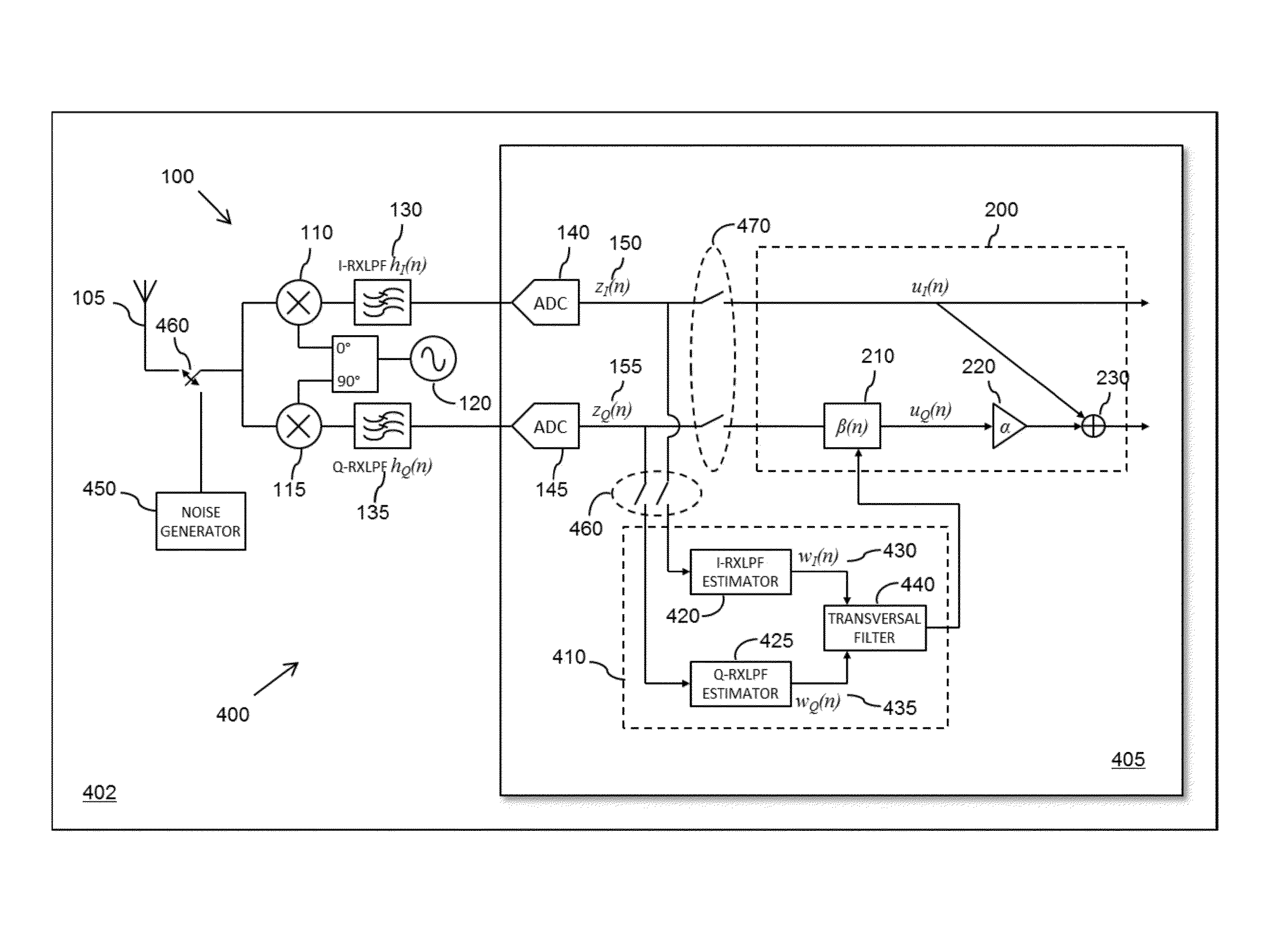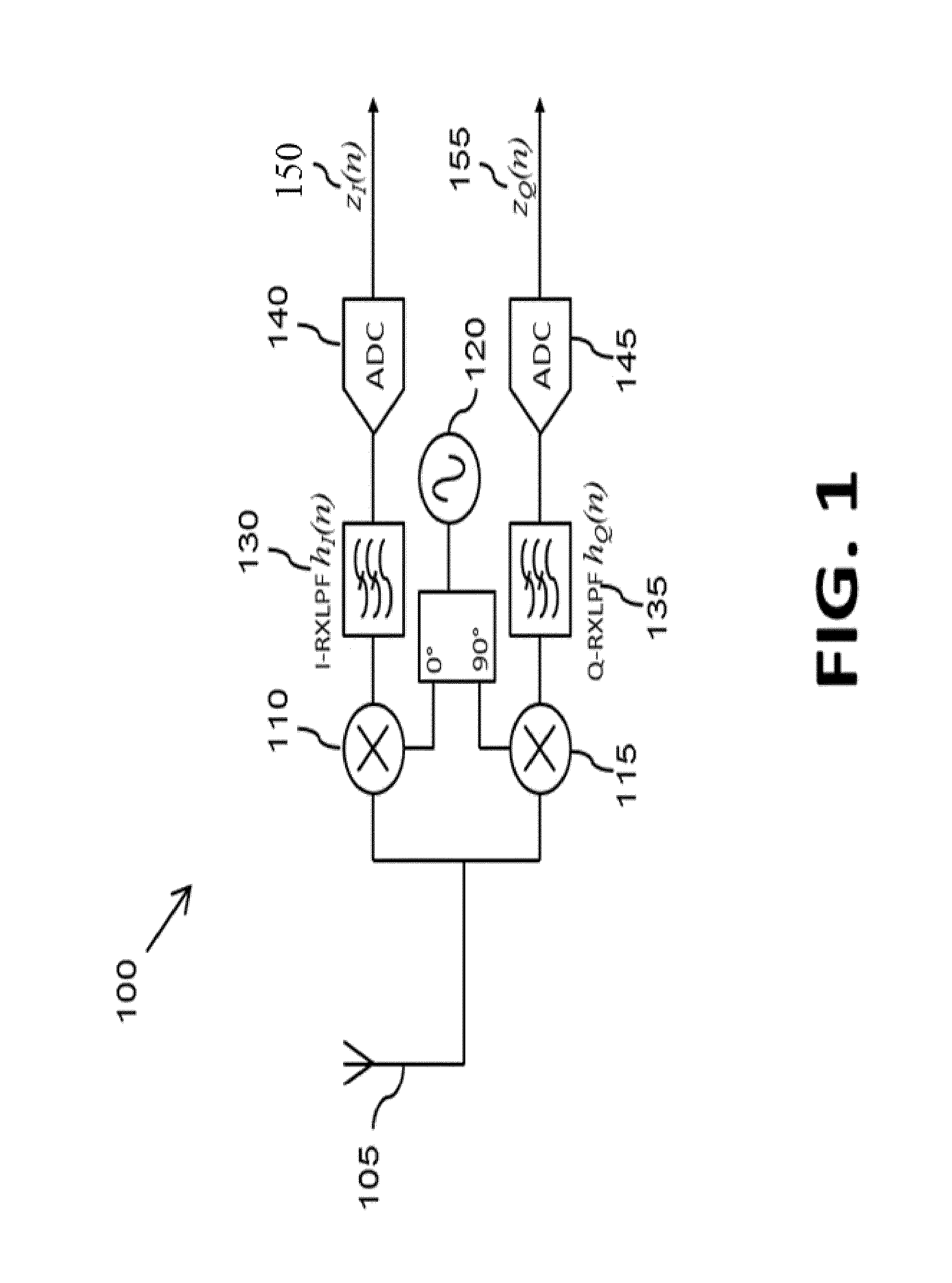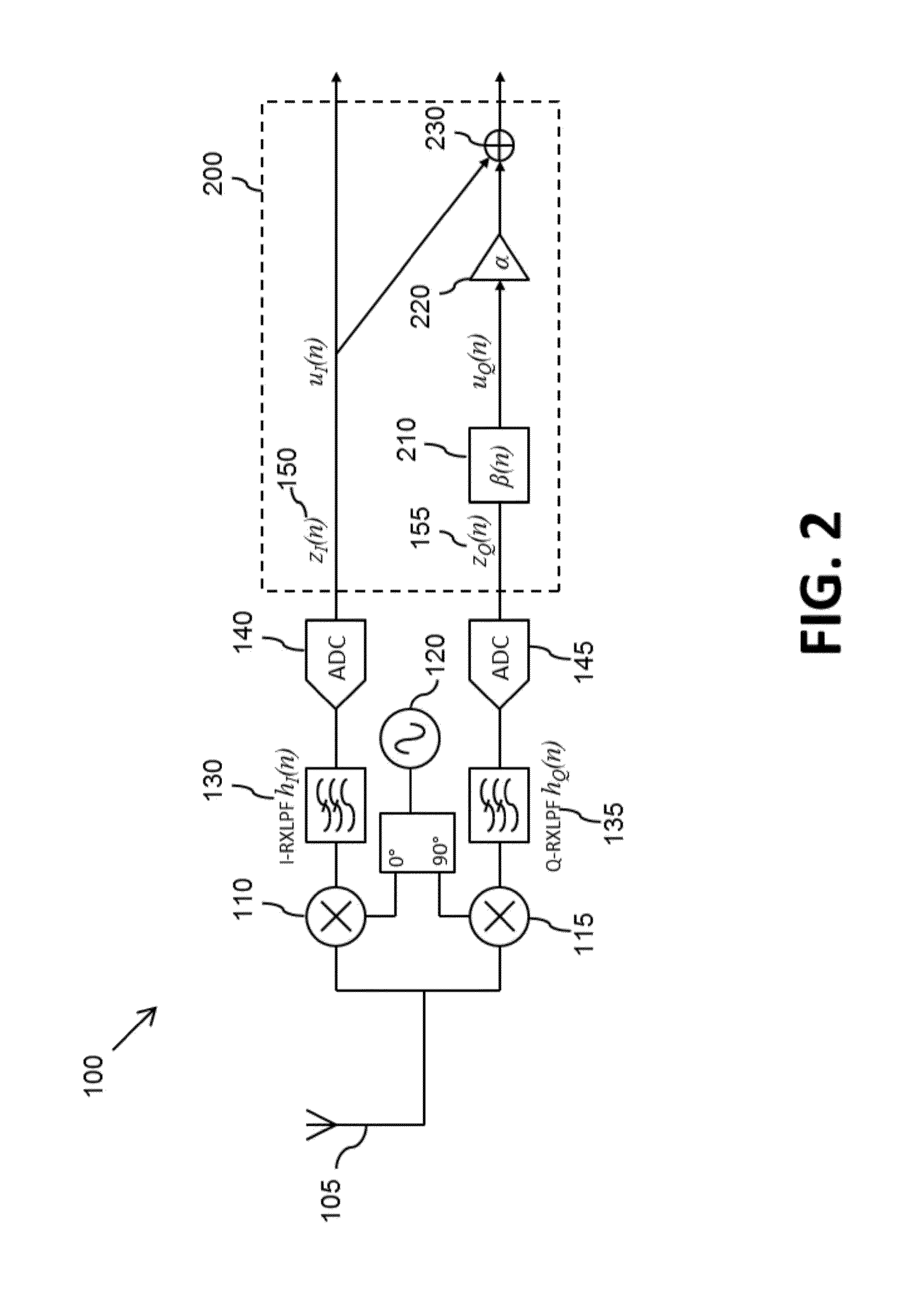Method and apparatus for configuring a frequency dependent I/Q imbalance compensation filter
a filter technology, applied in electrical equipment, transmission monitoring, digital transmission, etc., can solve the problems of significant frequency dependent i/q imbalance, performance loss, and degrade the image rejection ratio (irr) of the receiver, and achieve the effect of significantly reducing the computational complexity of obtaining such estimate filtering values
- Summary
- Abstract
- Description
- Claims
- Application Information
AI Technical Summary
Benefits of technology
Problems solved by technology
Method used
Image
Examples
Embodiment Construction
[0037]Examples of the invention will be described in terms of one or more radio frequency, RF, transceiver modules for use in a wireless communication unit, such as user equipment in third generation partnership project (3GPP™) parlance. However, it will be appreciated by a skilled artisan that the inventive concept herein described may be embodied in any type of RF module, wireless communication unit or wireless transceiver that comprises discrete I-path and Q-path filtering. Furthermore, because the illustrated embodiments of the present invention may for the most part, be implemented using electronic components and circuits known to those skilled in the art, details will not be explained in any greater extent than that considered necessary as illustrated below, for the understanding and appreciation of the underlying concepts of the present invention and in order not to obfuscate or distract from the teachings of the present invention.
[0038]Referring now to FIG. 4, there is illus...
PUM
 Login to View More
Login to View More Abstract
Description
Claims
Application Information
 Login to View More
Login to View More - R&D
- Intellectual Property
- Life Sciences
- Materials
- Tech Scout
- Unparalleled Data Quality
- Higher Quality Content
- 60% Fewer Hallucinations
Browse by: Latest US Patents, China's latest patents, Technical Efficacy Thesaurus, Application Domain, Technology Topic, Popular Technical Reports.
© 2025 PatSnap. All rights reserved.Legal|Privacy policy|Modern Slavery Act Transparency Statement|Sitemap|About US| Contact US: help@patsnap.com



